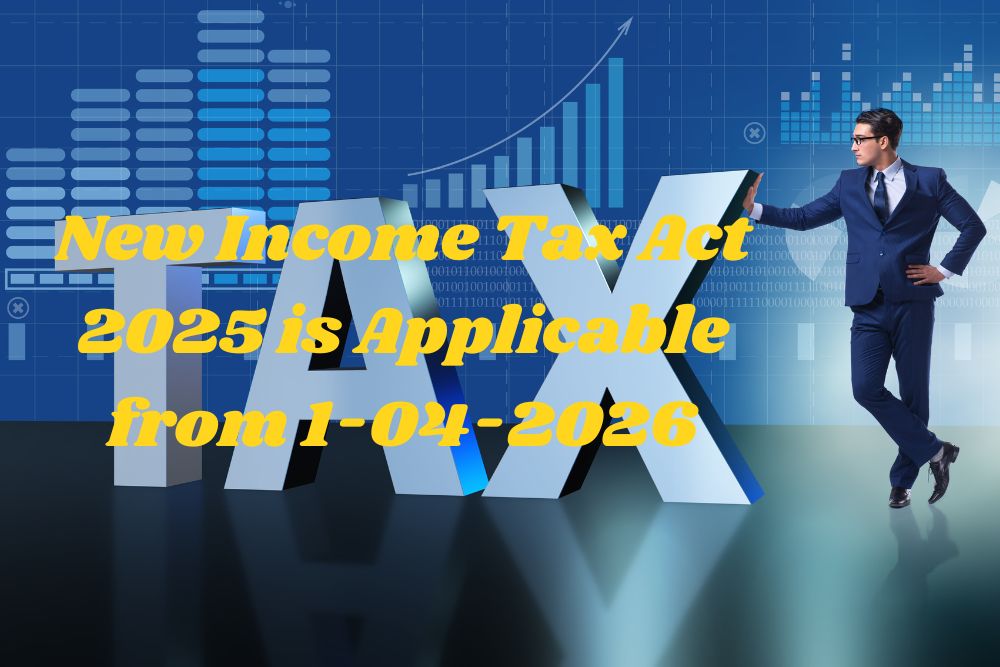
New Provisions as per Income Tax Act, 2025 :The Act is applicable w.e.f. 1 April 2026.
General Tax Payers below 60 Years of Age
Senior Citizens From 60 Years to 79 Years
Super Senior Citizens Above 80 Years of Age
The key differences between the old tax regime and the new tax regime are based on tax slabs, exemptions, deductions, and the overall approach to taxation.
The old tax regime allows taxpayers to use a set of tax slabs, with tax rates increasing as income rises. These slabs include various exemptions and deductions, such as deductions under Section 80C, 80D, HRA for Salaried individuals, Interest on Housing Loan etc. The old tax regime suits individuals who prefer claiming deductions and exemptions (for example, for insurance, home loans, etc.) and are willing to deal with the paperwork.
The new tax regime has lower tax rates but does not allow most exemptions and deductions. It is a simplified system that aims to reduce the compliance burden. The new tax regime suits individuals who prefer simplicity and do not have large deductions or exemptions to claim. It offers lower tax rates but at the cost of foregoing deductions and exemptions.
Income Tax Calculated upto 5,00,000 is given as rebate u/s 87A.
Standard Deduction Available for Salaried and Pensioners Rs. 50,000
Therefore it means that No Tax is payable upto income of Rs. 5 Lakhs.
Income Tax Slabs If Income exceed 5 Lakhs For General Tax Payers (FY 2024-2025):
Up to ₹2,50,000: Nil
₹2,50,001 to ₹5,00,000: 5%
₹5,00,001 to ₹10,00,000: 20%
Above ₹10,00,000: 30%
Income Tax Slabs If Income exceed 5 Lakhs For Senior Citizen Tax Payers (FY 2024-2025):
Up to ₹3,00,000: Nil
₹3,00,001 to ₹5,00,000: 5%
Income Tax Slabs If Income exceed 5 Lakhs For Super Senior Citizens Tax Payers (FY 2024-2025):
Up to ₹5,00,000: Nil
₹5,00,001 to ₹10,00,000: 20%
Above ₹10,00,000: 30%
Standard Deduction Available for Salaried and Pensioners Rs. 75,000
Income Tax Calculated upto 7,00,000 is given as rebate u/s 87A.
Therefore it means that No Tax is payable upto income of Rs. 7 Lakhs.
Income Tax Slabs If Income exceed 7 Lakhs (FY 2024-2025) For General Tax Payers:
Up to ₹3,00,000: Nil
₹3,00,001 to ₹6,00,000: 5%
₹6,00,001 to ₹9,00,000: 10%
₹9,00,001 to ₹12,00,000: 15%
₹12,00,001 to ₹15,00,000: 20%
Above ₹15,00,000: 30%
Income Tax Calculated upto 5,00,000 is given as rebate u/s 87A.
Standard Deduction Available for Salaried and Pensioners Rs. 50,000
Therefore it means that No Tax is payable upto income of Rs. 5 Lakhs.
Income Tax Slabs If Income exceed 5 Lakhs For General Tax Payers (FY 2025-2026):
Up to ₹2,50,000: Nil
₹2,50,001 to ₹5,00,000: 5%
₹5,00,001 to ₹10,00,000: 20%
Above ₹10,00,000: 30%
Income Tax Slabs If Income exceed 5 Lakhs For Senior Citizen Tax Payers (FY 2025-2026):
Up to ₹3,00,000: Nil
₹3,00,001 to ₹5,00,000: 5%
Income Tax Slabs If Income exceed 5 Lakhs For Super Senior Citizens Tax Payers (FY 2025-2026):
Up to ₹5,00,000: Nil
₹5,00,001 to ₹10,00,000: 20%
Above ₹10,00,000: 30%
Standard Deduction Available for Salaried and Pensioners Rs. 75,000
Income Tax Calculated upto 12,00,000 is given as rebate u/s 87A.
Therefore it means that No Tax is payable upto income of Rs. 12 Lakhs.
Income Tax Slabs If Income exceed 12 Lakhs (FY 2024-2025) For General Tax Payers:
Up to ₹4,00,000: Nil
₹4,00,001 to ₹8,00,000: 5%
₹8,00,001 to ₹12,00,000: 10%
₹12,00,001 to ₹16,00,000: 15%
₹16,00,001 to ₹20,00,000: 20%
₹20,00,001 to ₹24,00,000: 25%
Above ₹24,00,000: 30%
The Bill is introduced in the Parliament and the Act will be made applicable since 1 April, 2026.
Introduction of the 'Tax Year' Concept: The Bill introduces the concept of a 'Tax Year,' aligning the assessment period with the financial year, thereby simplifying tax calculations and compliance.
Enhanced Powers for Tax Authorities: Tax authorities are granted expanded access to taxpayers' electronic records, including emails, social media accounts, and online trading and bank accounts during investigations. This aims to improve transparency and compliance but raises concerns about privacy.
Simplification of Tax Provisions: The Bill seeks to simplify tax provisions by reducing its length and eliminating redundant sections, making it more accessible and easier to understand for taxpayers.
Broader Definition of Virtual Digital Assets: The Bill expands the definition of Virtual Digital Assets (VDAs) to include a wider range of digital assets, ensuring comprehensive taxation in this evolving sector.
Consolidation of Tax Deducted at Source (TDS) Provisions: TDS provisions have been consolidated into a single section, streamlining the process and reducing complexity for taxpayers.